Spatchcock This!
Okay, I admit it. I do kinda like to say “spatchcock.” It sounds naughty. I’m like a little kid with a bubblegum cigarette, aren’t I?
I actually used this as the password for a website where I’d posted my book proposal. I’m always forgetting passwords, so I wanted to make this one memorable. “Spatchcockthis” was pretty unforgettable. It felt like a dirty little secret of mine. It was fun until I decided to show the proposal to some people I didn’t know so well. This included my friend’s father, who is an Evangelical pastor with an interest in cooking. I explained what “spatchcocking” actually meant, but the secret was out: Jill Shepherd has a trashy, trouble-making side. Fair enough.
If I were to name one recipe that epitomizes my cooking style, I’d have to pick a spatchcocked, roasted chicken. Why?
- Because “spatchcock” sounds like a naughty word and I am entertained by people who look shocked when I say it.
- Because a great roast chicken is all about using the highest quality ingredient- specifically a pastured, farm-raised bird.
- Because spatchcocking is a way to improve the end result while also saving my fellow busy parents time.
- Because a roasted bird is three meals in one and is the ultimate in getting the most out of an ingredient. See “One Chicken. Three Meals.”
- Because a well-roasted chicken is always wonderful, homey, elegant and comforting.
Alright, so how do you spatchcock a bird? It’s simple. All you’re doing is cutting the backbone out of a whole bird. Why? It flattens the bird out and puts the leg and breast meat on the same plane, allowing the breast and leg meat to be at optimal serving temperature at just about the same time.
When you leave the center cavity intact, the breast meat is “done” long before the leg meat, because it is more exposed to circulating air. That means dry breast meat. There’s no need for that! It also takes longer for the bird to cook because that center cavity doesn’t have great air flow and creates a difference in temperature between the inside and outside of the bird.
I know some of you are freaked out by the “whole chicken” thing. It’s bloody and it looks so darned much like- well, a chicken. Be courageous and grateful, folks. It is a very good thing to recognize that your meat comes from an animal- to think about your meat as something that once lived and wonder how well it lived. That makes you grateful.
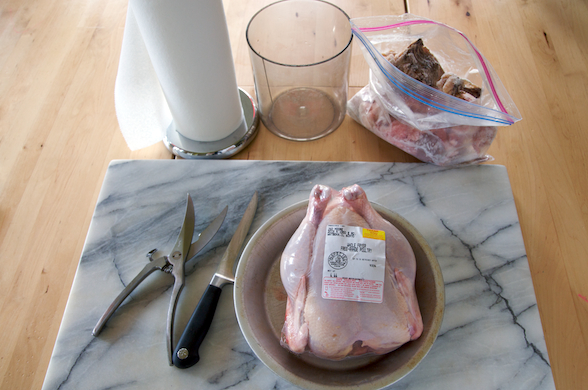
Here's what you need to get started (clockwise from top left): Paper towels for patting the bird dry and cleaning up juices. A scrap pail for fatty bits and garbage. A bag for saving the "goodies." A top-quality pasture-raised chicken. A boning knife (optional). A pair of kitchen shears or poultry shears.
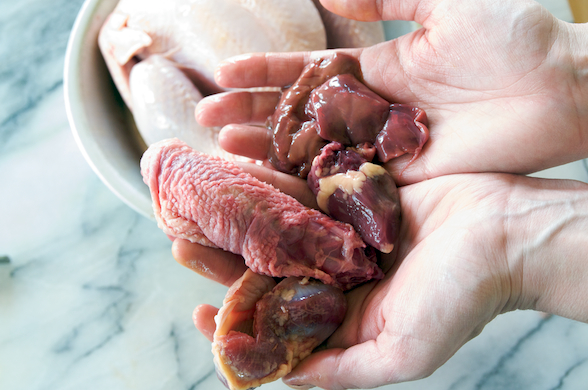
Remove and SAVE the "goodies" from inside the bird. My birds come with (from top to bottom) a liver, heart, neck and gizzard. I save these for stock and sauces. They are rich and nutritious.
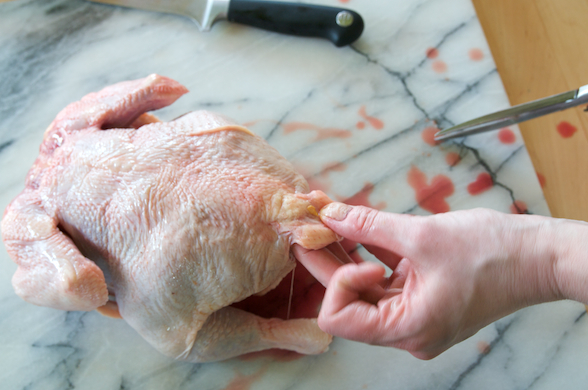
Place the bird breast side down. Grasp that "clucker" by the tail. Begin to cut, using the tail to pull against the forward pressure of the scissors.

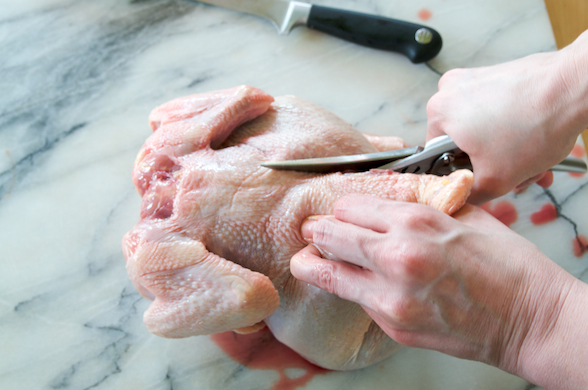
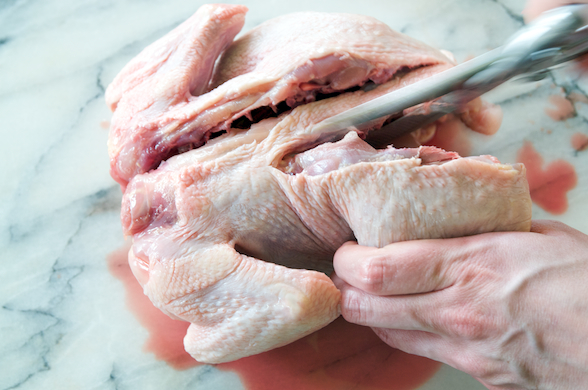
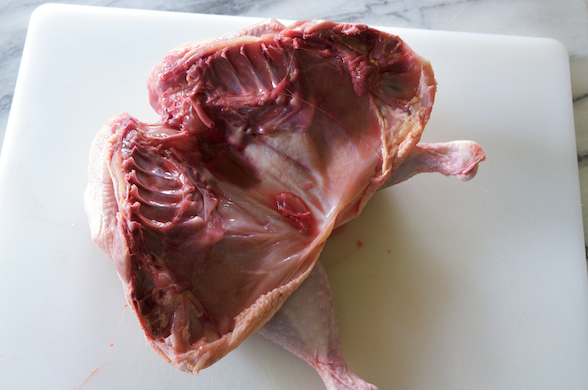



This is the only way to cook a large chicken. But I want to make sure that I only take out the backbone. It seemed more difficult in class but that might have been because my husband was trying to learn too.